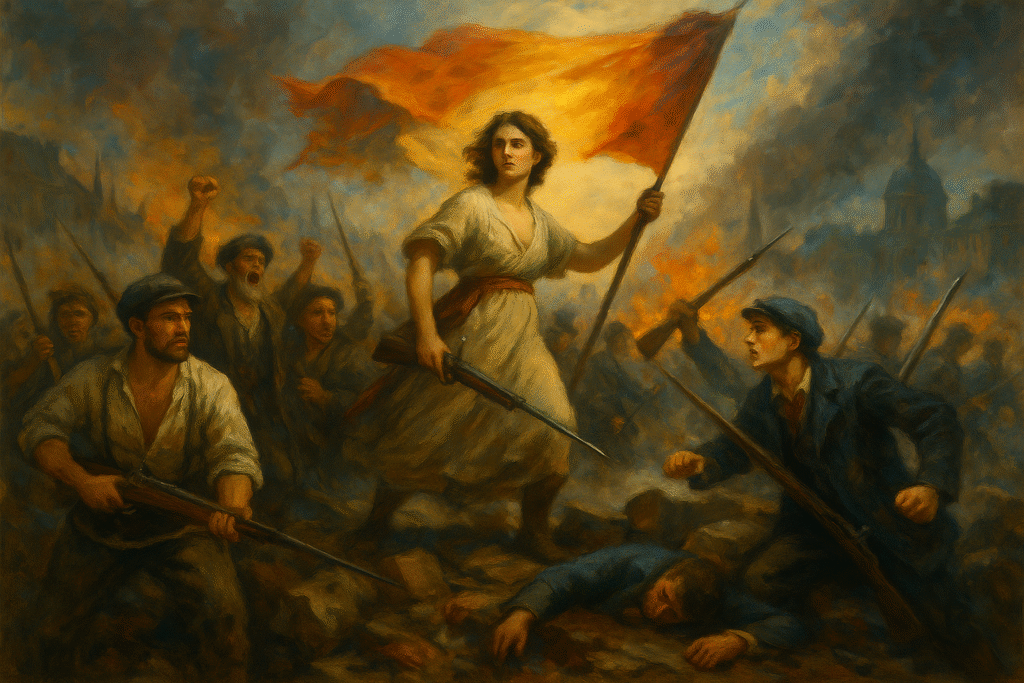Throughout history, how revolutions begin has intrigued scholars, politicians, and citizens alike. Revolutions are significant moments that reshape societies, often leading to dramatic changes in governance, culture, and economics. Understanding the steps and factors that contribute to these pivotal events can provide insights into their consequences and eventual ends.
What Are Revolutions?
Revolutions are fundamental and often sudden changes in political, social, or economic structures. They can emerge from various causes, which often intertwine. To grasp how revolutions begin, it’s vital to understand their character:
* Political Change: Revolutions often aim to overthrow existing power structures.
* Social Change: They may target class, race, or gender inequalities.
* Economic Change: Revolutions can arise from economic distress or calls for reform.
Common Causes of Revolutions
The question of how revolutions begin can be broken down into several common causes:
1. Economic Discontent: High inflation, unemployment, or economic inequality can fuel revolutionary sentiment.
2. Political Oppression: Authoritarian regimes часто face widespread dissent, leading to unrest.
3. Social Inequity: Disillusionment among marginalized groups can spark revolutionary actions.
4. Ideological Movements: Flourishing ideologies, such as democracy and socialism, may ignite revolutionary fervor.
5. Crisis Events: Wars, famines, or natural disasters can expose vulnerabilities in government structures.
According to the Government Research Database, revolutions have unique patterns that can often be predicted based on previous events.
Phases of a Revolution
How Revolutions Begin
Understanding how revolutions begin involves recognizing these phases:
1. Pre-revolutionary Situation: This phase is defined by rising tensions and grievances.
2. Emergence of Leadership: Charismatic leaders often rise during this phase, uniting those who feel marginalized.
3. Mass Mobilization: Protests and demonstrations begin as the populace seeks change.
4. Crisis: Governments may falter or respond with force, escalating tensions.
5. Successful Overthrow: If successful, a new regime takes power, often with promises of reform.
How Revolutions End
Just as crucial as how revolutions begin is understanding how they conclude. Revolutions can end in various ways:
1. Successful Establishment of New Government: A peaceful transition may establish a new regime.
2. Restoration of Old Regime: In some cases, backlash against revolutionary forces leads to a return to previous power structures.
3. Civil War or Fragmentation: Struggles may continue, leading to prolonged conflict.
4. Stagnation or Bureaucratic Regime: Revolutions might falter, settling into less revolutionary governance.
Famous Revolutions and Their Impact
The French Revolution
The French Revolution is often cited as a classical example of how revolutions begin. It started with economic hardship, radical political ideas, and social inequality, leading to a complete transformation of French society. Its impacts included:
* The rise of democracy in Europe.
* The spread of revolutionary ideas globally.
The Russian Revolution
Similarly, the Russian Revolution demonstrated how discontent with an oppressive regime can trigger profound changes. The Bolsheviks leveraged political unrest and food shortages to gain power, reshaping Russia into a communist state. Its repercussions profoundly influenced the 20th century and subsequent revolutionary movements worldwide.
Understanding Revolutions: Essential Insights
To better understand how revolutions begin, consider these essential insights:
* Collective Action: United action by the masses is often insufficient without a shared ideology.
* Role of Media: Information dissemination can amplify revolutionary sentiments.
* Timing and Context: Historical and cultural factors heavily influence the conditions conducive to revolution.
Key Statistics on Revolutions
* According to research from Academic Research Portal, approximately 50% of revolutions end successfully in regime change.
* Historically, only about 10% of revolutions lead to a long-term stable government.
Final Thoughts on Revolutions
In conclusion, the inquiry into how revolutions begin and how they end highlights the complex interplay of factors that shape societal transformations. By analyzing historical examples and recognizing underlying causes, we can better appreciate the forces that drive change.
If you want to delve deeper into the historical context of revolutions or engage with revolutionary theory, visit our Noetik Blog for thought-provoking content.
Understanding how revolutions unfold can enrich our perception of current events and political landscapes.


